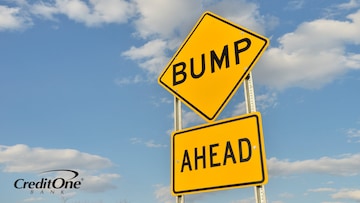High-Yield CDs vs Bump-Up CDs
April 25, 2024
Lots of financial products are available, including numerous types of certificates of deposit (CDs). Here’s how they differ and the pros and cons of each.

Introduction
Along your financial journey, you may have come across certificates of deposit (CDs). But it gets more complicated when you start looking at the various types of CDs because they’re not all created equal. Common terms in the financial industry include jumbo CD, high-yield CD and bump-up CD.
Let’s take a closer look at the differences between these various products, and the benefits each one offers.
What Is a CD?
When we hear someone talking about CDs, many of us think about compact discs — those little silver music albums that were all the rage in the ‘90s. But in the financial world, CD stands for certificate of deposit.
A CD is a bank deposit product that usually offers a higher return than a savings account in exchange for leaving your money untouched for a set period of time until it becomes “mature.” Your return on investment (ROI) is based on an annual percentage yield (APY), and the agreed-upon time period is called the term. If you choose to withdraw your funds before the CD’s maturity date, you might incur an early withdrawal penalty.
CDs are considered low-risk because they have fixed rates. Also, CDs are provided FDIC insurance coverage when opened through a Member FDIC financial institution. That means the federal government guarantees you won’t lose your money, up to a max of $250,000 per account owner, per account ownership category, per bank. Additionally, you may obtain increased coverage for joint accounts or when adding a beneficiary.
Types of CDs
There are several different types of CD available, and it’s important to know which one you’re looking at. One type of CD might seem completely out of reach for you, while another is entirely doable.
Regular CD
A regular or standard CD pays a pre-disclosed fixed interest rate if you agree to leave your money untouched for the full term. There may be a minimum deposit required, which generally ranges from $100 to $2,500.
Jumbo CD
A jumbo CD has a higher minimum deposit requirement than a regular CD, and often pays a higher interest rate as well. It’s not uncommon for a jumbo CD to require a minimum deposit of $10,000 to $100,000.
High-yield CD
This CD pays an above-average interest rate at the time of purchase. Whether interest rates go up or down during the CD’s term, you keep earning at that same guaranteed rate.
Bump-up CD
A bump-up CD usually starts with a slightly lower rate than a high-yield CD, but it gives you the chance to bump up your rate once or twice during the term if interest rates increase.
Step-up CD
Similar to a bump-up CD, your rate can increase during your term. But instead of you choosing when to pull the trigger, a step-up CD has pre-scheduled rate increases at certain intervals — for example, every six months over a two-year term.
Variable-rate CD
Instead of locking in a rate or choosing to increase your rate, this CD’s rate varies along with economic conditions. If interest rates go up or down, your CD’s rate will generally follow suit. Variable-rate CDs are much less common than fixed-rate CDs.
What Is a High-Yield CD?
The simplest way to say it is that high-yield CDs start with the highest possible rate at the outset, and that rate is guaranteed for the CD’s term — for better or for worse.
If national interest rates go up or down, or your bank decides to change its APY for CDs, you’re still locked into your initial contracted rate. So that’s great for you if interest rates go down, but not as good if rates go up.
Financial institutions get to set their own rates, but you can shop around and choose which CD to purchase based on its advertised rates. Once your CD matures, you can withdraw the funds plus interest, or roll it over into a new CD.
What Is a Bump-Up CD?
Bump-up CDs may start with a lower APY, but you don’t have to keep it if economic conditions change. You usually get one chance during the term to bump up your CD to a higher rate, which then remains in effect for the rest of the term. You just need to be strategic about when to bump it up, because you’re trying to hit the peak of the bell curve.
Depending on your bank, the process to do this is usually very simple. Most likely, you’ll just need to log in to your online account to see if you’re eligible for a rate bump, and then follow the prompts to implement it.
High-Yield CD vs Bump-Up CD
High-yield CDs and bump-up CDs are similar financial products, but they have a few key differences.
| High-yield CD | Bump-up CD |
Interest rate | Set for the term | Can increase once |
Starting APY | Highest available | Slightly lower |
Deposit size | Regular or jumbo | Regular or jumbo |
Best economy | Falling rates | Rising rates |
How To Choose the Right CD for Me
Selecting a CD that’s right for you is pretty easy. It all depends on where you think the market is going over the next several months to years. Following stock market trends and overall financial news is a great way to figure this out.
If you think interest rates are going down, you should stick with a regular high-yield CD, because that gives you the highest return over the entire term. If you think they’re going up, a bump-up CD gives you more control to ride that wave and take advantage of higher rates that may emerge during your CD term.
Bottom Line
High-yield CDs and bump-up CDs are both great options for growing your savings. Since high-yield CDs generally have a fixed rate, you’re betting that interest rates won’t go up during your term. And high-yield CDs can be especially profitable if interest rates go down.
But if you’re unsure about the economic future, a bump-up CD might be a better choice. There’s no benefit if interest rates go down, but you have more control if they go up.
And not only is your CD from a bank usually FDIC-insured, but you also might get additional rate guarantees. If you are interested in exploring CD options, take a look at Credit One Bank’s high-yield jumbo CD and a bump-up jumbo CD.





